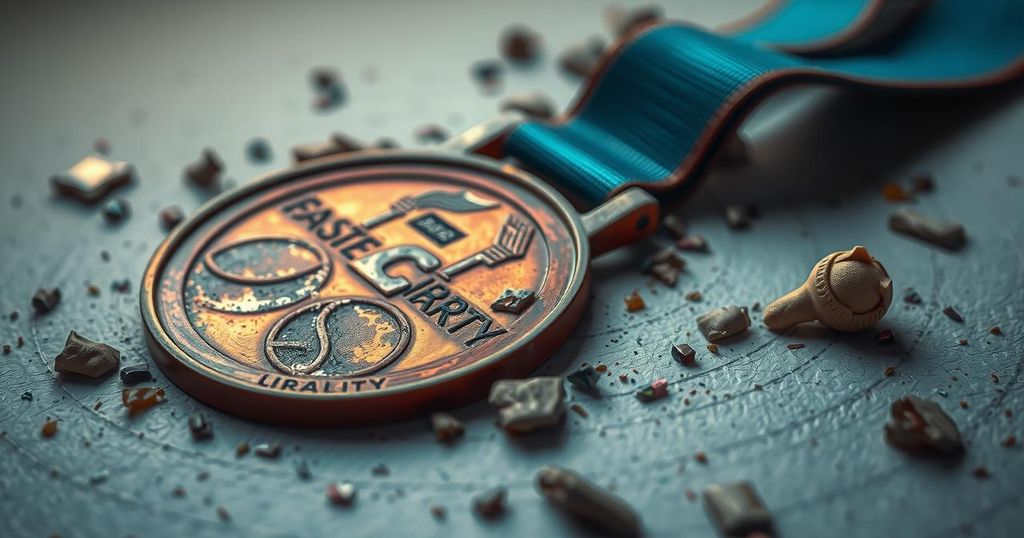Quality Concerns Over Paris Olympic Medals Prompt Athlete Complaints
Over 100 athletes, including Australians, have complained to the IOC about low-quality medals from the Paris Games. The medals are reportedly deteriorating, prompting a commitment from the IOC to replace these medals. An investigation revealed that varnish issues are at the root of the problem, paralleling complaints made during the 2016 Olympics.
More than 100 athletes have lodged complaints with the International Olympic Committee (IOC) regarding the substandard quality of medals awarded at the recent Paris Games. Some of the affected athletes, including six from Australia, have expressed their frustrations publicly, noting that their medals are deteriorating since the conclusion of the Games in August. Among those speaking out is Natalya Diehm, bronze medalist in BMX freestyle, who shared distressing photographs of her medal online, highlighting its rapid decline.
An investigation conducted by the New York Times has brought to light these issues, leading to an apology from Olympic officials. The IOC has announced that damaged medals will be systematically replaced by the Monnaie de Paris, the French mint, and will be engraved to match the originals. The Australian Olympic Committee has stepped forward to assist athletes in obtaining replacements for their faulty medals.
Reports indicate that the problematic medals do not include any gold ones, as it is primarily the silver and bronze medals that are experiencing issues. This incident mirrors previous complaints from athletes regarding the quality of medals, notably during the Rio Olympics in 2016. Monnaie de Paris has attributed the complications to a “technical issue related to varnish” and identified that the defective coating was a consequence of recent regulatory changes.
In response to athletes’ concerns, Natalya Diehm mentioned, “It is unfortunate because the original bronze color is so pretty. I am not sure why this has happened.” This reflects the sentiments shared among numerous athletes who are disappointed with the quality of their medals, treasures that should symbolize their hard-fought achievements.
In summary, athletes from the Paris Games have raised significant concerns over the quality of their medals, prompting the IOC and Monnaie de Paris to take corrective measures. These developments shed light on the challenges related to the production and durability of Olympic medals, underscoring the necessity for stringent quality control in future events.
The reported issues with Olympic medals stem from production challenges faced by the Monnaie de Paris, the entity responsible for creating the medals for the Paris Games. Athletes are particularly concerned about the deterioration of both the silver and bronze medals, with numerous complaints emerging post-Games. This is not the first occurrence of such problems, as similar complaints were made during the 2016 Rio Olympics, pointing to a broader issue regarding the consistency and reliability of Olympic medals. Moreover, the production of the medals was impacted by recent European Union regulations which modified the varnish formula historically used to prevent metal from rusting, leading to this year’s complications. This change underscores the impact of regulatory compliance on manufacturing processes and product quality in high-stakes environments.
In conclusion, the dissatisfaction among athletes regarding the quality of medals at the Paris Games highlights an ongoing concern that may necessitate improvements in medal production standards. The IOC’s commitment to replacing damaged medals reflects the seriousness of these complaints, while the insights regarding varnish adjustments provide context for the current issues. It serves as an important lesson to ensure that subsequent Olympic events prioritize quality control in the creation of their awards.
Original Source: www.nine.com.au








Post Comment